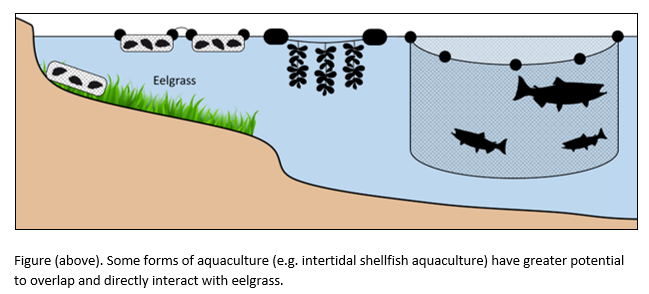AQUACULTURE AND EELGRASS Zostera marina INTERACTIONS IN TEMPERATE ECOSYSTEMS
As the global aquaculture industry expands , there is more potential for it to overlap and interact with eelgrass (Zostera marina)
in coastal waters . Shellfish aquaculture can have positive, neutral, and negative effects on eelgrass. Positive interactions can be generated by the filtering activity of cultured bivalves, which may improve water quality and reduce epiphyte loads. S hellfish faeces and pseudofaeces may also provide more nutrients to eelgrass , thereby enhancing growth. However, such positive interactions have only been observed within an aquaculture setting a handful of times. N egative interactions
are more common and can be a result of shading and sedimentation. Generally, these negative
effects tend to occur directly under and immediately surrounding shellfish farms, and rapidly diminish with increasing distance.
In contrast, only one field study has investigated the effects of finfish aquaculture on eelgrass in a temperate setting, and the results were inconclusive. Nonetheless, many studies have investigated the effects of Mediterranean finfish farms on two other species of seagrass ( Posidonia oceanica and Cymodocea nodosa ). These studies report clear and negative interactions. However, it is unknown if these studies are relevant for temperate regions due to differences in environmental conditions and the seagrass species being investigated. Thus, further study in a temperate setting is clearly warranted.
We conclude by highlighting key research gaps, and go on to make some general management recommendations that may help minimize potential negative interactions between aquaculture and eelgrass in temperate ecosystems.
